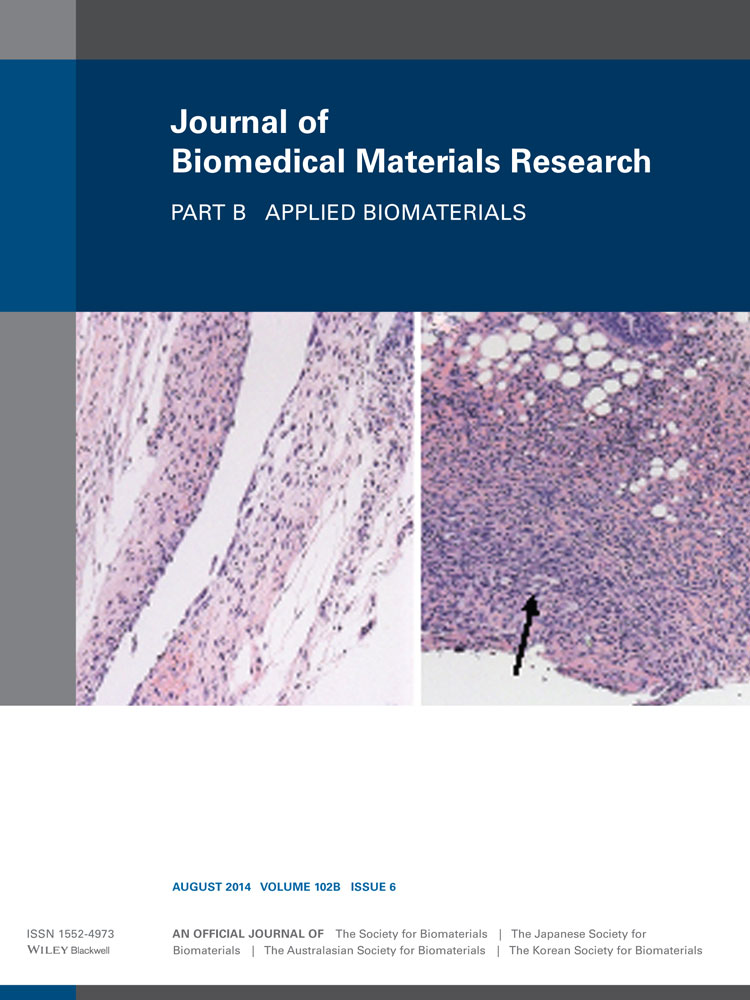An atmospheric-pressure plasma-treated titanium surface potentially supports initial cell adhesion, growth, and differentiation of cultured human prenatal-derived osteoblastic cells
Abstract
An atmospheric-pressure plasma (APP) treatment was recently reported to render titanium (Ti) surfaces more suitable for osteoblastic cell proliferation and osteogenesis. However, the mechanism of action remains to be clearly demonstrated. In this study, we focused on cell adhesion and examined the effects of the APP treatment on the initial responses of human prenatal-derived osteoblastic cells incubated on chemically polished commercially pure Ti (CP-cpTi) plates. In the medium containing 1% fetal bovine serum, the initial cell adhesion and the actin polymerization were evaluated by scanning electron microscopy and fluorescence microscopy. The expression of cell adhesion-related molecules and osteoblast markers at the messenger RNA level was assessed by real-time quantitative polymerase chain reaction. Although the cells on the APP-treated CP-cpTi surface developed fewer cytoskeletal actin fibers, they attached with higher affinity and consequently proliferated more actively (1.46-fold over control at 72 h). However, most of the cell adhesion molecule genes were significantly downregulated (from 40 to 85% of control) in the cells incubated on the APP-treated CP-cpTi surface at 24 h. Similarly, the osteoblast marker genes were significantly downregulated (from 49 to 63% of control) at 72 h. However, the osteoblast marker genes were drastically upregulated (from 197 to 296% of control) in these cells by dexamethasone and β-glycerophosphate treatment. These findings suggest that the APP treatment improves the ability of the CP-cpTi surface to support osteoblastic proliferation by enhancing the initial cell adhesion and supports osteoblastic differentiation when immature osteoblasts begin the differentiation process. © 2014 Wiley Periodicals, Inc. J Biomed Mater Res Part B: Appl Biomater, 102B: 1289–1296, 2014.




